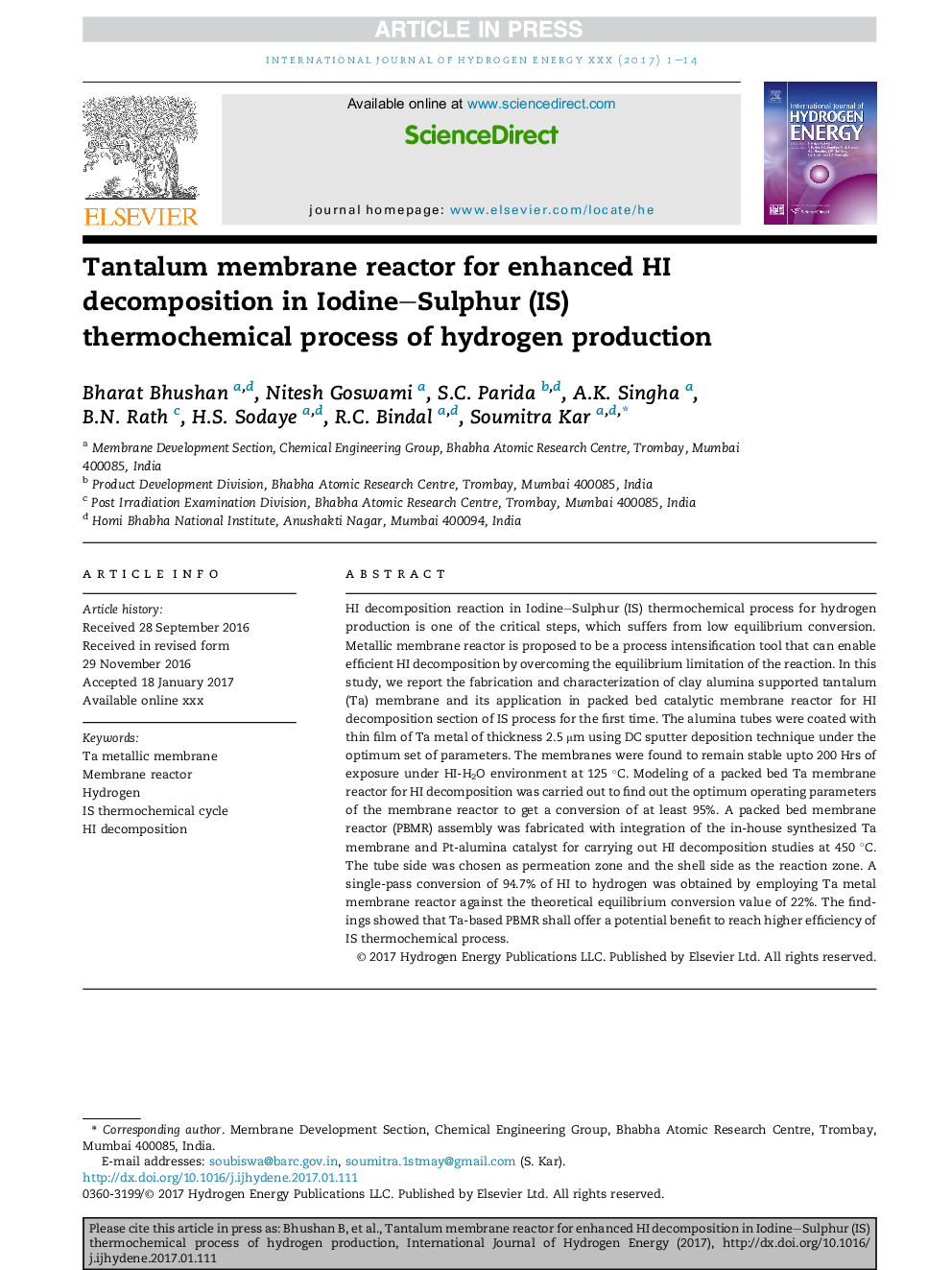| Article ID | Journal | Published Year | Pages | File Type |
|---|---|---|---|---|
| 5146779 | International Journal of Hydrogen Energy | 2017 | 14 Pages |
Abstract
HI decomposition reaction in Iodine-Sulphur (IS) thermochemical process for hydrogen production is one of the critical steps, which suffers from low equilibrium conversion. Metallic membrane reactor is proposed to be a process intensification tool that can enable efficient HI decomposition by overcoming the equilibrium limitation of the reaction. In this study, we report the fabrication and characterization of clay alumina supported tantalum (Ta) membrane and its application in packed bed catalytic membrane reactor for HI decomposition section of IS process for the first time. The alumina tubes were coated with thin film of Ta metal of thickness 2.5 μm using DC sputter deposition technique under the optimum set of parameters. The membranes were found to remain stable upto 200 Hrs of exposure under HI-H2O environment at 125 °C. Modeling of a packed bed Ta membrane reactor for HI decomposition was carried out to find out the optimum operating parameters of the membrane reactor to get a conversion of at least 95%. A packed bed membrane reactor (PBMR) assembly was fabricated with integration of the in-house synthesized Ta membrane and Pt-alumina catalyst for carrying out HI decomposition studies at 450 °C. The tube side was chosen as permeation zone and the shell side as the reaction zone. A single-pass conversion of 94.7% of HI to hydrogen was obtained by employing Ta metal membrane reactor against the theoretical equilibrium conversion value of 22%. The findings showed that Ta-based PBMR shall offer a potential benefit to reach higher efficiency of IS thermochemical process.
Related Topics
Physical Sciences and Engineering
Chemistry
Electrochemistry
Authors
Bharat Bhushan, Nitesh Goswami, S.C. Parida, A.K. Singha, B.N. Rath, H.S. Sodaye, R.C. Bindal, Soumitra Kar,
